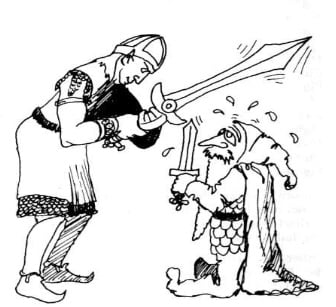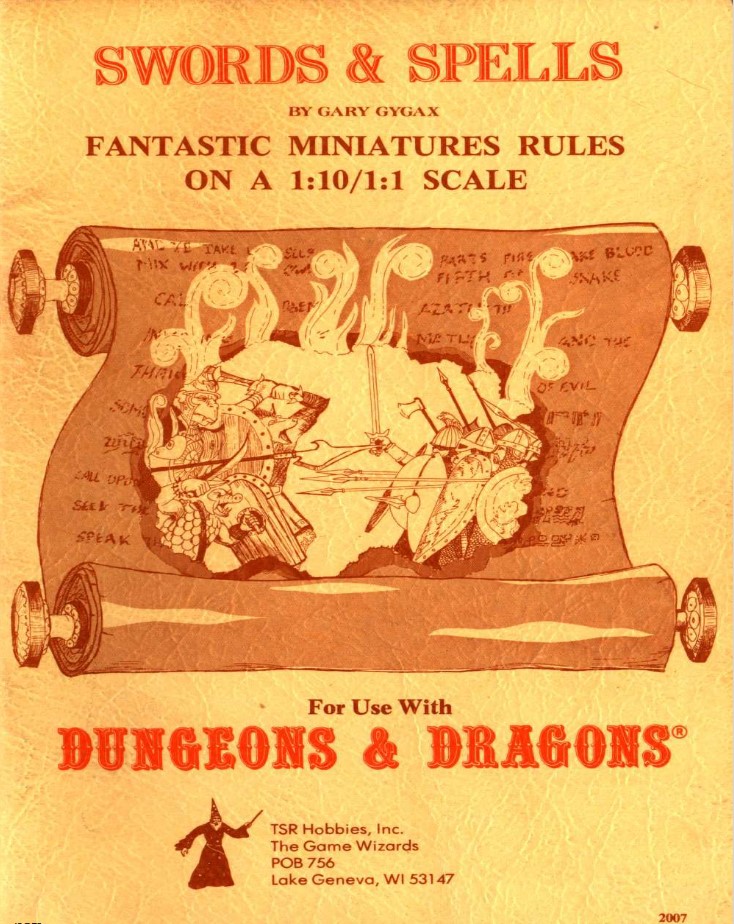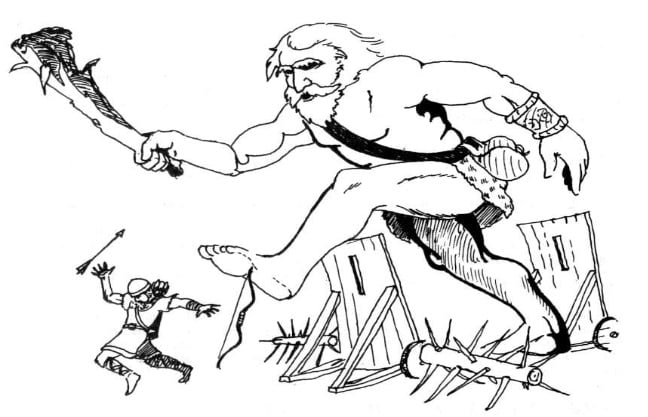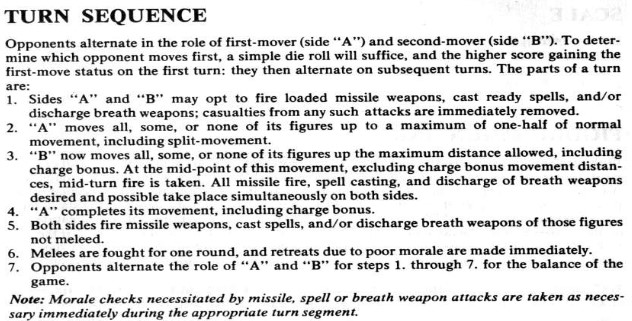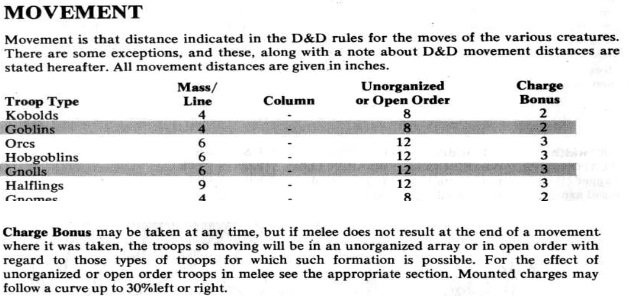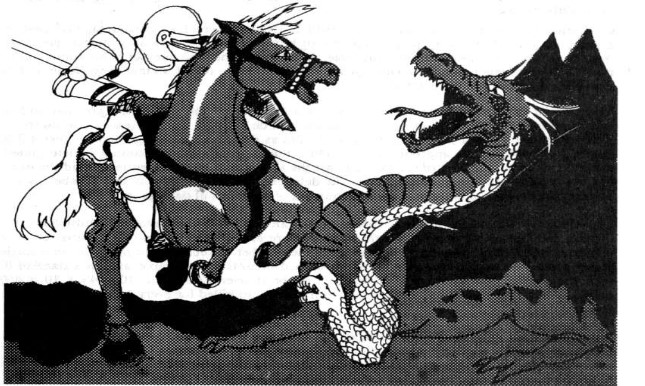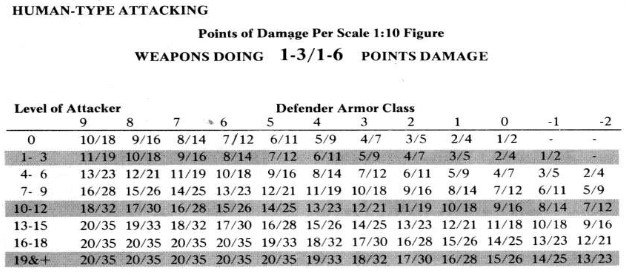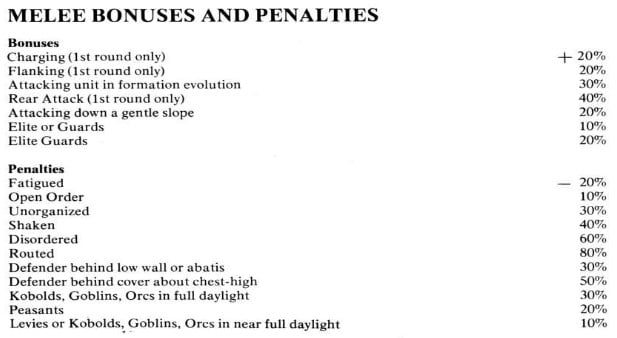‘Swords and Spells’, D&D’s Official Diceless Wargame That is Too Much For Too Little
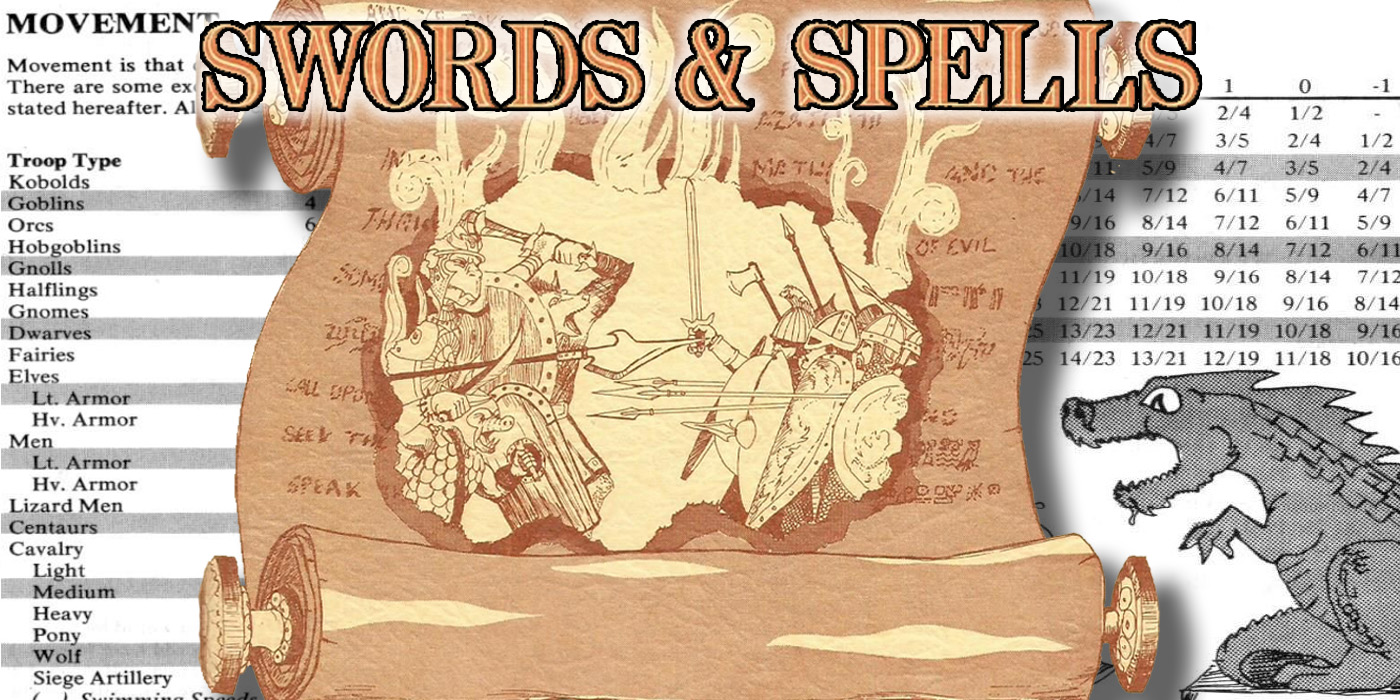

Granted, Swords and Spells might be “official”, but that does not necessarily mean that it’s all that good.
When Dungeons & Dragons was just starting out, way back in the 70s, there weren’t any rules for two battling armies. So good ol’ Gary decided to remedy that. While thinking about it, he realized trying to roll that many dice for perhaps hundreds or thousands of units is impossible. So, the logical conclusion: remove the dice entirely!
Technically, Swords and Spells is an RPG supplement for 1st edition D&D. However, it is fully playable as a standalone wargame. It just happens to use the theme as D&D, including all the monsters and spells players had come to know so well.
Swords and Spells is a set of rules that players can use with their own miniatures in order to replicate full-scale battles.
A Little Bit of History
Fans of Swords and Spells will often call it the successor to Chainmail, a similarly styled wargame. And rightfully so; Gary Gygax developed both. It is as much flatly stated in the opening text. Swords and Spells were released as the fifth and final supplement for the original D&D boxed set, but it does not bear the “Supplement V”, as each other of the supplements do.
Regardless, Swords and Spells was not well received when it was released in 1976 and now is mostly regarded as “it’s fine”. Furthermore, the rules were not included in later editions of D&D.
Swords and Spells Gameplay
As stated before, Swords and Spells attempts to simplify the scale of war and it does a decent job of that. Still, there are a few clunky rules sprinkled throughout. Perhaps the best example of what I mean can be shown by looking at the turn order for the game.
So, the turns go thusly:
- Both players perform simultaneous ranged attacks.
- Player A moves as many of their units as they like, up to half their speed.
- Player B moves as many of their units as they like, up to half their speed.
- Player B may perform ranged attacks.
- Player B moves any remaining units up to their full speed.
- Player A moves any remaining units up to their full speed.
- Both players perform simultaneous ranged attacks.
- Melee combat occurs
- Morale checks
- Player A and B swap who goes first.
Truth be told, I’m not even sure I have that right. But that’s how I’m reading it. Player B just gets a bonus attack because they moved second, I guess. But attacks are simultaneous so attacking first is fairly irrelevant? Still, positioning in any wargame is a big deal, so I get that. Still strange.
Too Much Over-Complication
This is basically how the rest of the rules unfold. It makes sense on some level but ends up over-complicating itself along the way. Case in point: Charging.
Any creature can make a Charge. However, if the unit they are in doesn’t end with a melee after that charge, they become disorganized and must refer to a separate table to see what happens, based on what sort of creatures the unit is comprised of. It’ll take that unit to spend some of their movement points in order to return to the proper formation, which can be up to 2 full move actions.
And this seems like so many steps which could have been avoided with a simple “Units can only charge if they will engage with an enemy unit at the end of the charge”.
But, there is so much other complicated stuff to skip over. Things like Facing, Morale Checks, Firing Arcs, Fatigue, Tracking Ammo, Terrain Effects on Movement, and how well armored your units can be before they stop being considered peasants (it’s no more than 10% with 6 AC), and get to the fun stuff: combat.
Can Never Have Too Many Combat Tables!
Combat without dice is strange but does kinda make sense in a way. When you’re “rolling” hundreds of dice, you’re going to eventually average out, so why not just use that average? For the record, I have no issues with that idea at all, but as you might expect with Swords and Spells, the rules get a little too granular.
The attacker checks the table for their level and which weapons they are using and compares the AC of the defender and sees how much damage they do.
Super easy, right?! And, yeah, it is. But, what 70s wargame would be complete without a long table of modifiers?!
Final Thoughts
All in all, Swords & Spells is the epitome of “of its time”. It uses a lot of the game tropes that wargames of the time used and that we collectively stopped using some time ago. Still, it provided an option for D&D players in the 70s a chance to run an all-out battle.
You can check out the entire rulebook here if you’re interested. If nothing else, the art is fun and I applaud the efforts Swords & Spells makes to encompass something so huge into something manageable. I’m cherry-picking the parts that fit my narrative (though the rules are mostly cherries in this case), but it does do a good job of scaling down something as grand as full-on war.

